Estonian Marine Institute
Type of resources
Available actions
Topics
Keywords
Contact for the resource
Provided by
Years
Formats
Representation types
Scale 1:
Resolution
-
Zooplankton dataset contains data on the species composition, biomass and abundance of meso- and merozooplankton groups. The data are gathered during the Estonian national monitoring of coastal and open seain the Baltic Sea. Samples are collected vertically from three horizons 1) near-bottom to upper halocline layer, 2) halocline top layer to termocline top layer 3) termocline top layer to surface in accordance with the Manual for Marine Monitoring in the COMBINE programme of HELCOM. The samples are analysed using microscopy. Biomass and abundance records are provided for such groups like Rotatoria, Copepoda, Cladocera etc.
-
Quantitative results of benthic flora species/taxon biomass dry weight and areal coverage sampled during Estonian national monitoring in the Estonian coastal sea, Baltic Sea. The samples are taken according to the Manual for Marine Monitoring in the COMBINE programme of HELCOM, annex C-8 and C-9.
-
Quantitative results of large invertebrates species/taxon biomass and abundance sampled during Estonian national monitoring in Estonian coastal sea, Baltic Sea. The samples are collected and treated in accordance with Manual for Marine Monitoring in the COMBINEprogramme of HELCOM.
-
Dataset provided to ICES by the Estonian Marine Institute with ichthyoplankton records from the Gulf of Riga (Baltic Sea).
-
The dataset contains abundance and biomass for different taxonomical units of phytoplankton (from phylum to species, according to identification accuracy) sampled from Estonian open and coastal waters in the Baltic Sea. Samples are collected with Ferrybox method (sampling depth appr. 5m) or by pooling samples from discrete depths (1, 5 and 10m) in national monitoring stations. Phytoplankton identification and enumeration was carried out using microscopy, biomass calculations were done using volume formulas provided by HELCOM-PEG (phytoplankton expert group) and published in http://www.ices.dk/marine-data/data-portals/Pages/DOME.aspx (PEG BIOVOLUME).
-
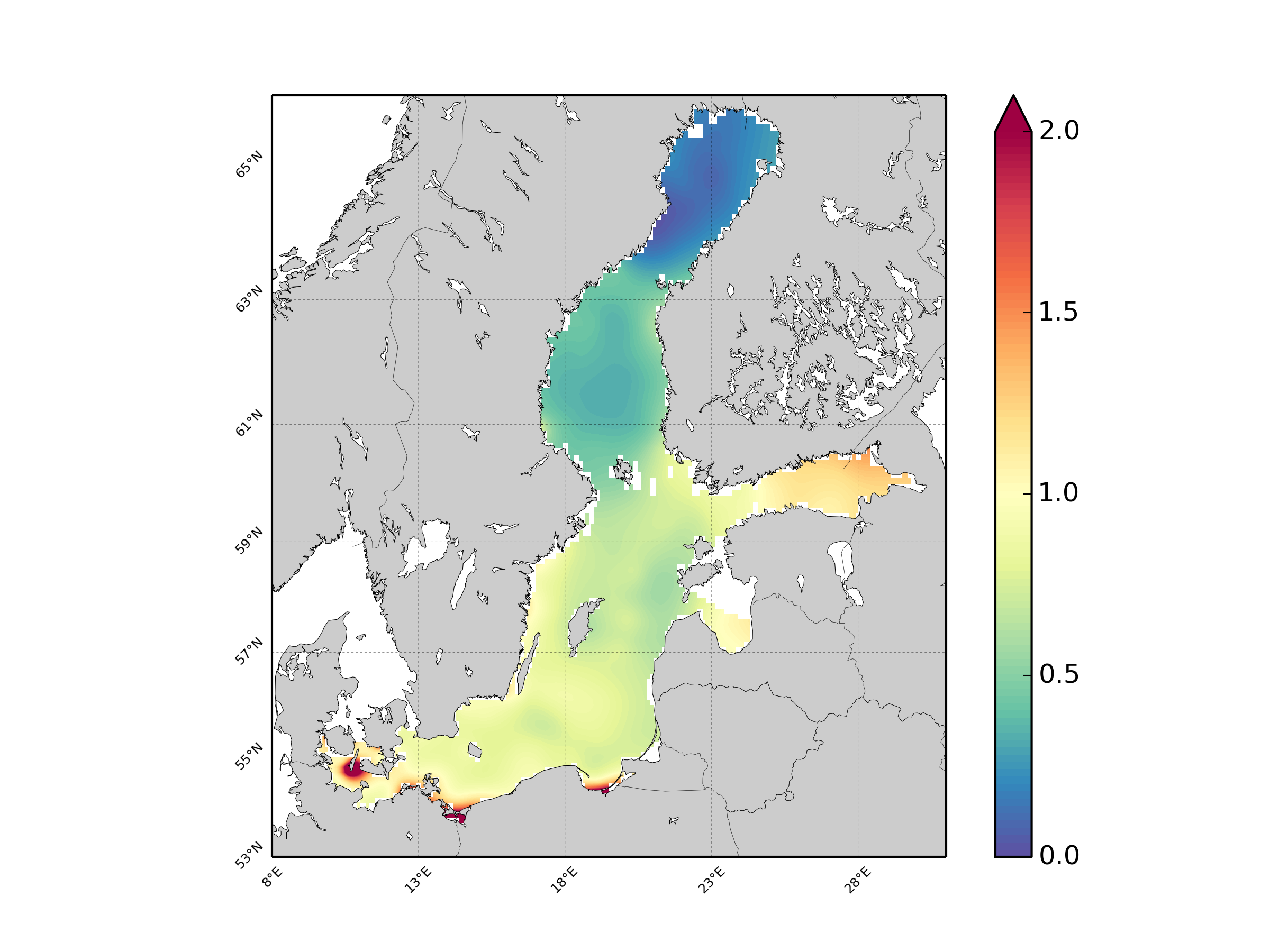
Units: umol/l. Method: spatial interpolation produced with DIVA (Data-Interpolating Variational Analysis). URL: http://modb.oce.ulg.ac.be/DIVA. Comment: Every year of the time dimension corresponds to a 10-year centred average for each season : - winter season (December-February), - spring (March-May), - summer (June-August), - autumn (September-November). Diva settings: Snr=1.0, CL=0.7.
-
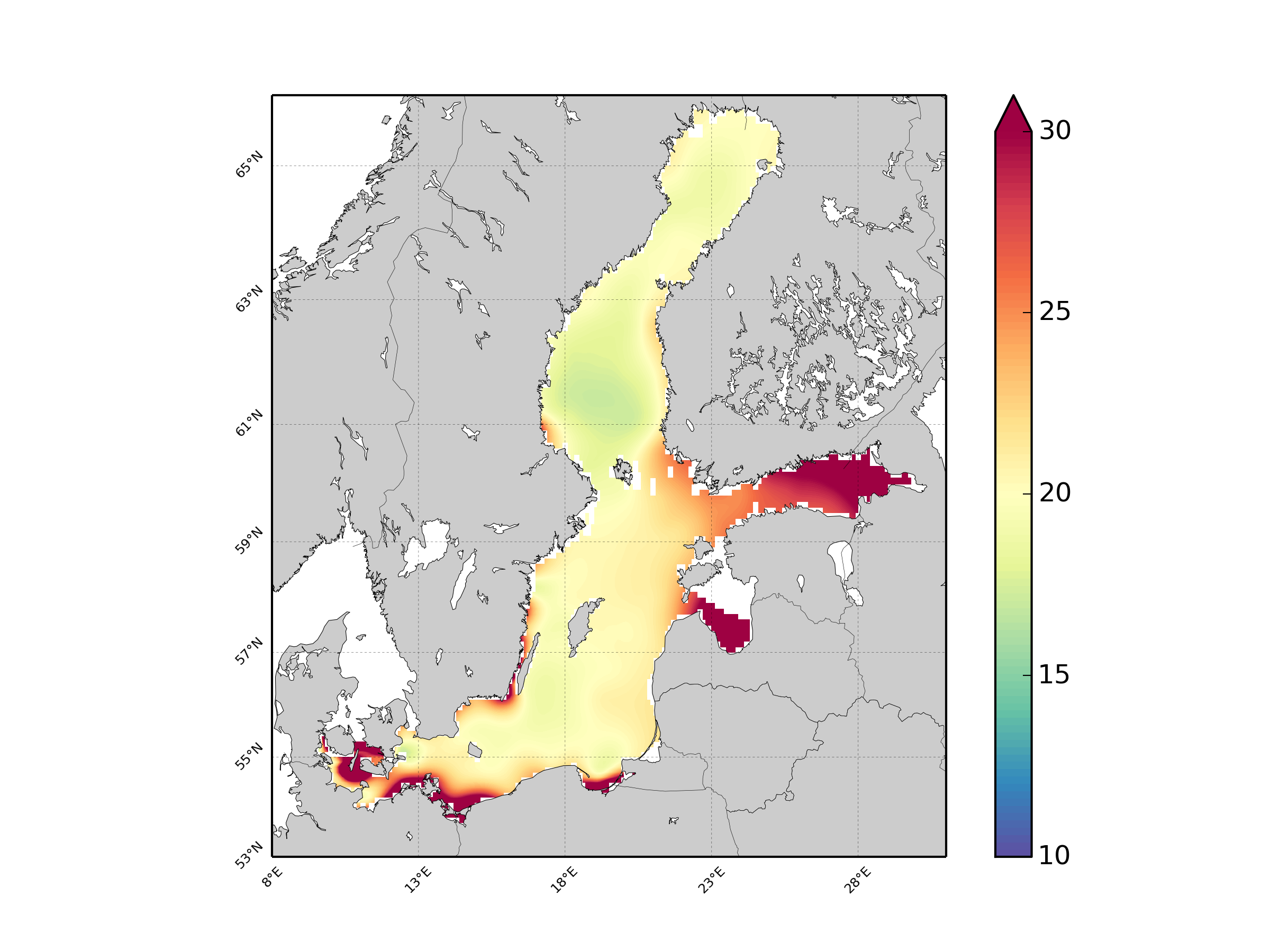
Units: umol/l. Method: spatial interpolation produced with DIVA (Data-Interpolating Variational Analysis). URL: http://modb.oce.ulg.ac.be/DIVA. Comment: Every year of the time dimension corresponds to a 10-year centred average for each season : - winter season (December-February), - spring (March-May), - summer (June-August), - autumn (September-November). Diva settings: Snr=1.0, CL=0.7.
-
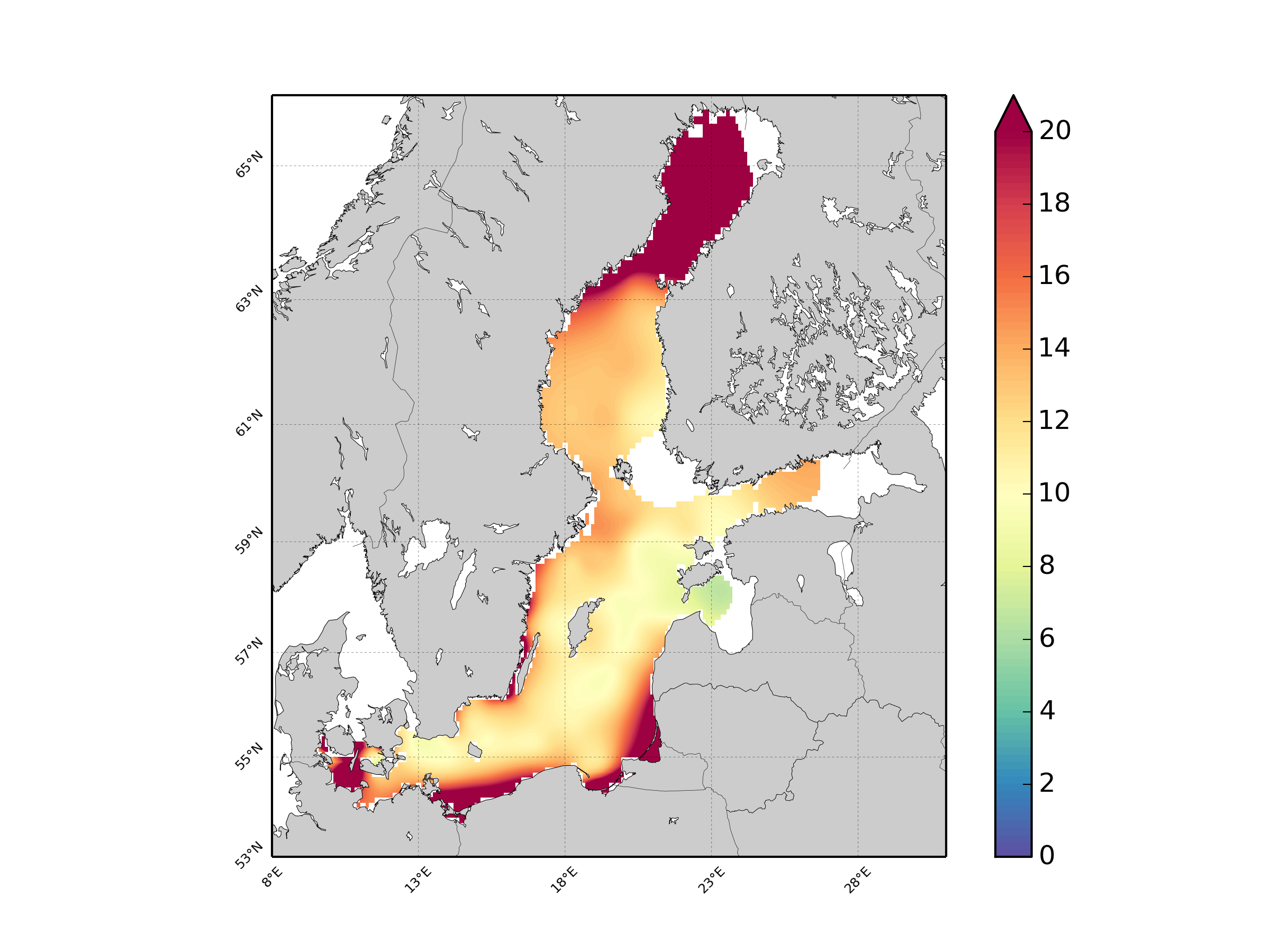
Units: umol/l. Method: spatial interpolation produced with DIVA (Data-Interpolating Variational Analysis). URL: http://modb.oce.ulg.ac.be/DIVA. Comment: Every year of the time dimension corresponds to a 10-year centred average for each season : - winter season (December-February), - spring (March-May), - summer (June-August), - autumn (September-November). Diva settings: Snr=1.0, CL=0.7.
-
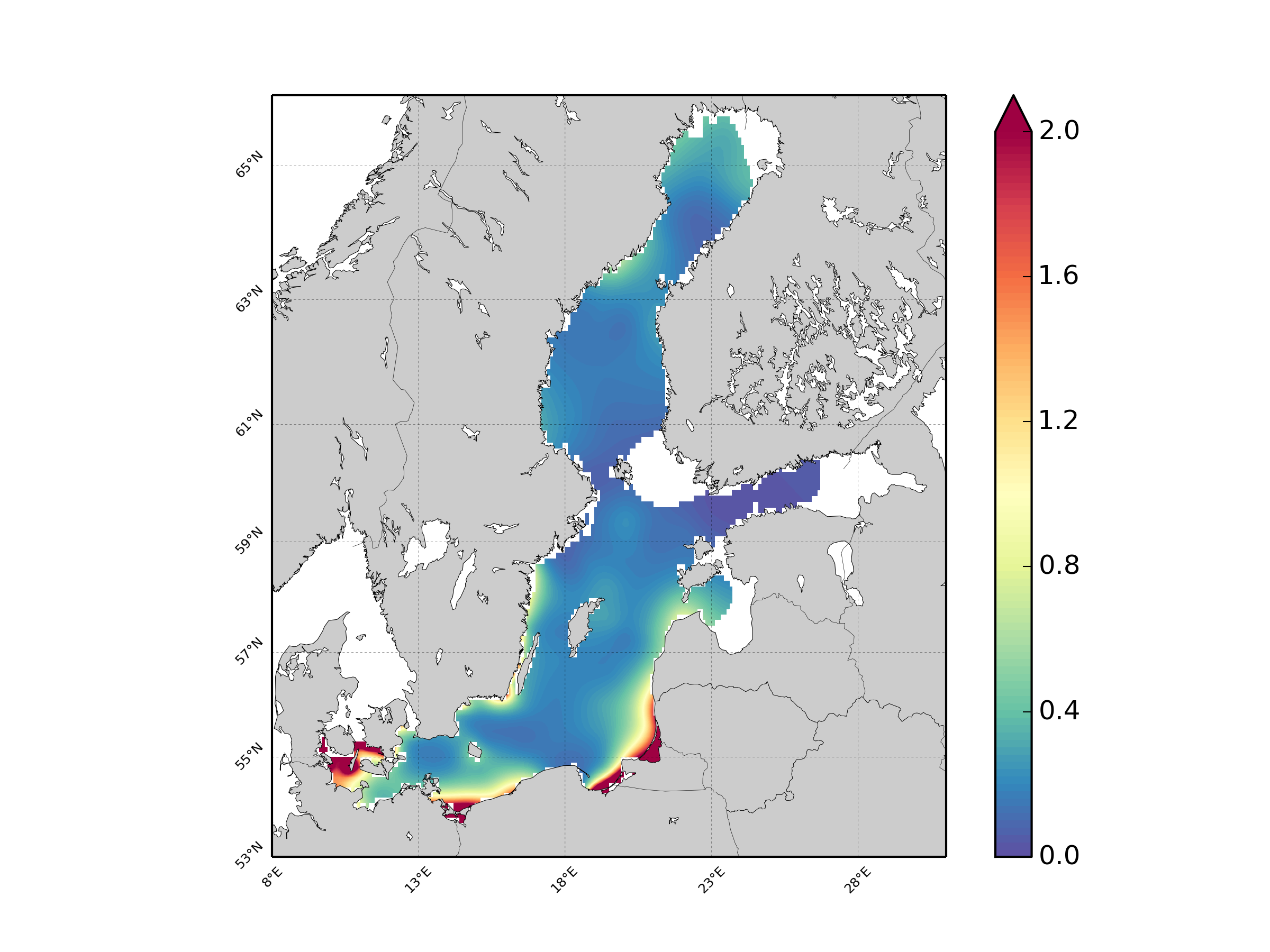
Units: umol/l. Method: spatial interpolation produced with DIVA (Data-Interpolating Variational Analysis). URL: http://modb.oce.ulg.ac.be/DIVA. Comment: Every year of the time dimension corresponds to a 10-year centred average for each season : - winter season (December-February), - spring (March-May), - summer (June-August), - autumn (September-November). Diva settings: Snr=1.0, CL=0.7
-
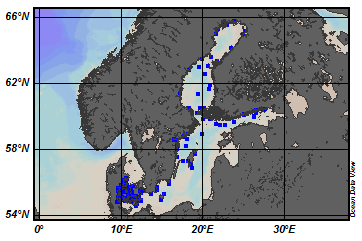
EMODnet Chemistry aims to provide access to marine chemistry data sets and derived data products concerning eutrophication, ocean acidification and contaminants. The chemicals chosen reflect importance to the Marine Strategy Framework Directive (MSFD). This regional aggregated dataset contains all unrestricted EMODnet Chemistry data on contaminants (49 parameters), and covers the Baltic Sea with 3818 CDI records divided per matrices: 1358 biota (396 Vertical profiles and 962 Time series),906 water profiles, 2510 sediment profiles. Vertical profiles temporal range is from 1985-04-16 to 2016-09-27. Time series temporal range is from 1972-05-02 to 2017-10-30. Data were aggregated and quality controlled by ‘Swedish Meteorological and Hydrological Institute (SMHI)’ from Sweden. Regional datasets concerning contaminants are automatically harvested. Parameter names in these datasets are based on P01, BODC Parameter Usage Vocabulary, which is available at: http://seadatanet.maris2.nl/bandit/browse_step.php . Each measurement value has a quality flag indicator. The resulting data collections for each Sea Basin are harmonised, and the collections are quality controlled by EMODnet Chemistry Regional Leaders using ODV Software and following a common methodology for all Sea Regions. Harmonisation means that: (1) unit conversion is carried out to express contaminant concentrations with a limited set of measurement units (according to EU directives 2013/39/UE; Comm. Dec. EU 2017/848) and (2) merging of variables described by different “local names” ,but corresponding exactly to the same concepts in BODC P01 vocabulary. The harmonised dataset can be downloaded as ODV spreadsheet (TXT file), which is composed of metadata header followed by tab separated values. This worksheet can be imported to ODV Software for visualisation (More information can be found at: https://www.seadatanet.org/Software/ODV ). The same dataset is offered also as XLSX file in a long/vertical format, in which each P01 measurement is a record line. Additionally, there are a series of columns that split P01 terms in subcomponents (measure, substance, CAS number, matrix...).This transposed format is more adapted to worksheet applications users (e.g. LibreOffice Calc). The 49 parameter names in this metadata record are based on P02, SeaDataNet Parameter Discovery Vocabulary, which is available at: http://seadatanet.maris2.nl/v_bodc_vocab_v2/vocab_relations.asp?lib=P02 . Detailed documentation will be published soon. The original datasets can be searched and downloaded from EMODnet Chemistry Download Service: https://emodnet-chemistry.maris.nl/search
 EMODnet Product Catalogue
EMODnet Product Catalogue